How to Paint a Cloud
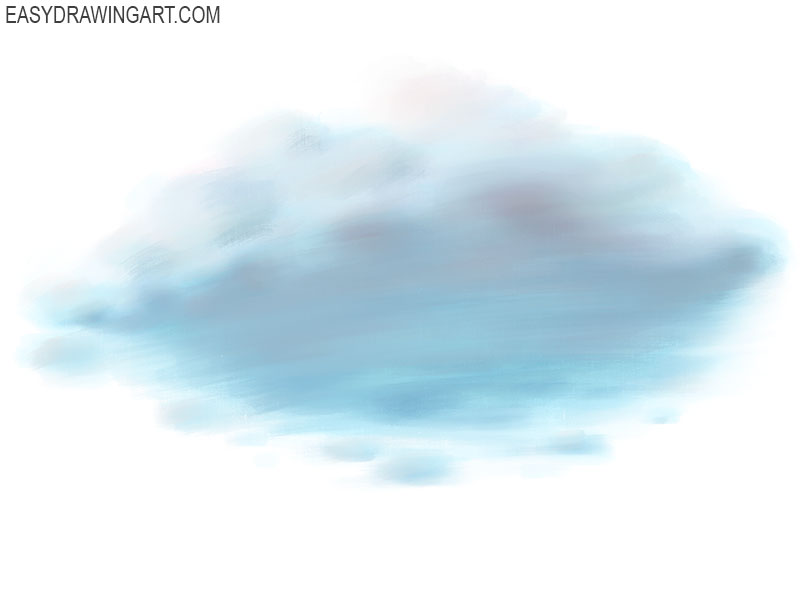
In this detailed step-by-step tutorial we will show you how to paint a cloud using any kind of traditional paints or digital methods.
Capturing the ephemeral beauty of clouds on canvas has fascinated artists for centuries. Painting a cloud is not merely about replicating a form but about understanding and conveying the subtle interplay of light, shadow, and color. This tutorial is designed to guide artists of all levels through the process of creating a realistic cloud, from the initial sketch to the final, sun-kissed hues.
In this comprehensive guide, we will explore the techniques to paint a cloud with a sense of volume and luminosity that echoes the natural world. Each step is crafted to help you build upon the last, ensuring that the complexity of a cloud’s form is captured with depth and realism.
We will discuss the importance of a flat base layer, the intricacy of outlining the cloud’s shape, the artistry behind the initial shading, the drama of core shadows, the impact of contrast in the shadows and light, the magic of adding highlights, and finally, the finesse required to infuse your cloud with the vibrant colors of the sun.
Whether you’re reaching for oil, acrylic, gouache, watercolor, or harnessing the power of digital tools, this guide on how to paint a cloud is universally crafted to suit artists across all mediums.
How to Paint a Cloud
Step 1 – Paint the flat base layer
Start by creating a tranquil foundation for your cloud. Select a serene shade of light blue and apply a smooth, even base layer across your canvas. This initial step is crucial, as it sets the tone for the sky and provides a uniform backdrop for the intricate details of your cloud to stand out.
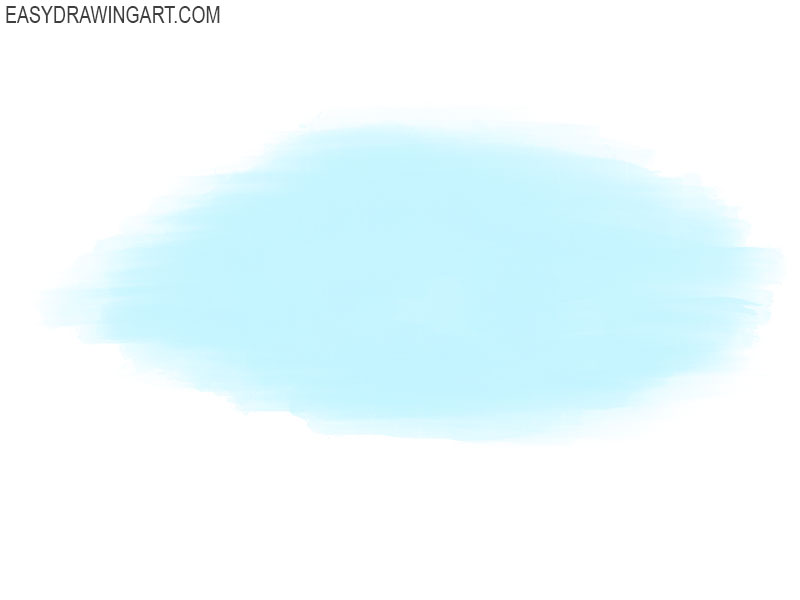
Step 2 – Define the futlines of the cloud
Now, take a moment to envision the cloud’s final shape. With a light touch, gently outline its expansive form onto the canvas, using a slightly darker shade. This will define the cloud’s boundaries and give you a visual framework for adding volume and texture in the subsequent steps. The outline should be fluid and organic, mimicking the natural, free-form shape of a cloud in the sky.

Step 3 – Add the initial shadow
Introduce a soft shadow to your cloud by blending a gradient of blues just below the outlined edges. This layer of color adds the first level of depth, suggesting the parts of the cloud that are further away and less touched by light. Use a mixture of blues to create a realistic effect, as if the cloud is beginning to puff out from the canvas.
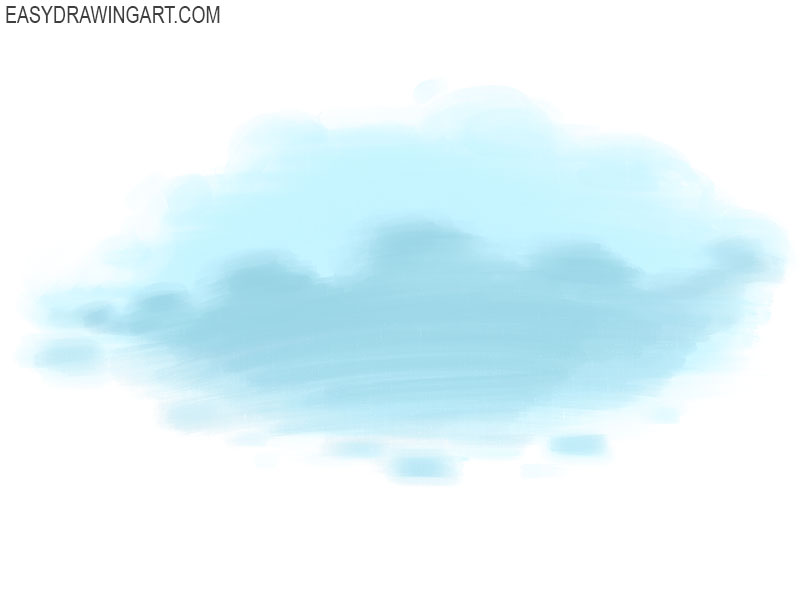
Step 4 – Paint the core shadow of the cloud
Deepen the sense of volume by applying core shadows. These are the darkest areas of the cloud, found in the recesses and folds of its form. Use a concentrated mix of blue and grey to suggest the density of the cloud, being mindful of where the light source is and where the darkest shadows would naturally fall.
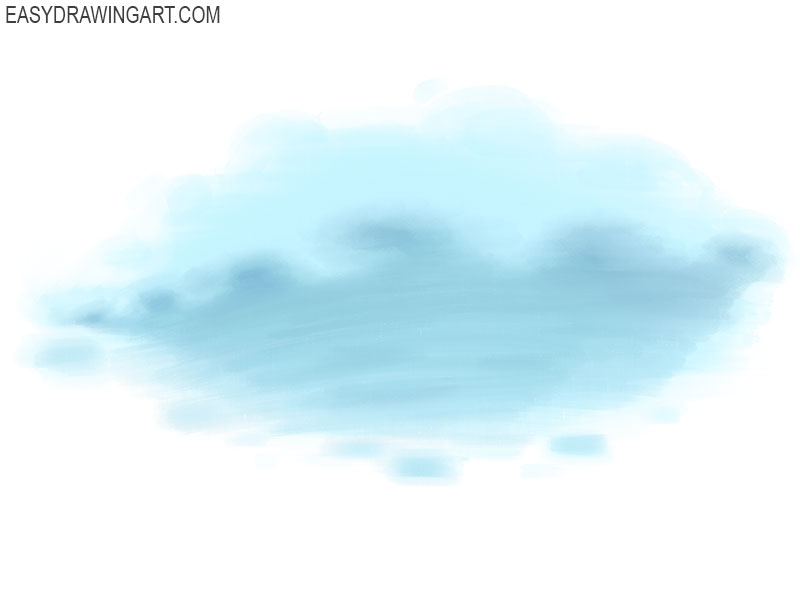
Step 5 – Add some texture
This step is about contrast and light. Make the shadows underneath and within the cloud more pronounced by using a darker tone, while simultaneously adding lighter tones to the areas where the light hits the cloud. This play of light and dark will give your cloud a more rounded, voluminous appearance, enhancing its three-dimensional effect.
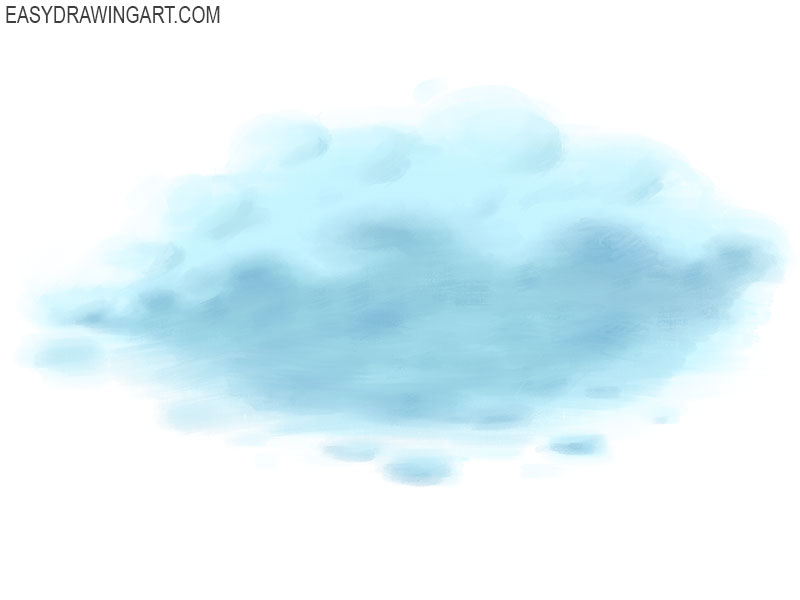
Step 6 – Paint highlights on the cloud
With the cloud’s shape and volume defined, it’s time to bring it to life with highlights. Using a fine brush and a lighter shade, gently apply highlights along the top edges and ridges where the light would naturally strike the cloud the most. These highlights should be subtle yet bright enough to suggest a soft glow from the light source.
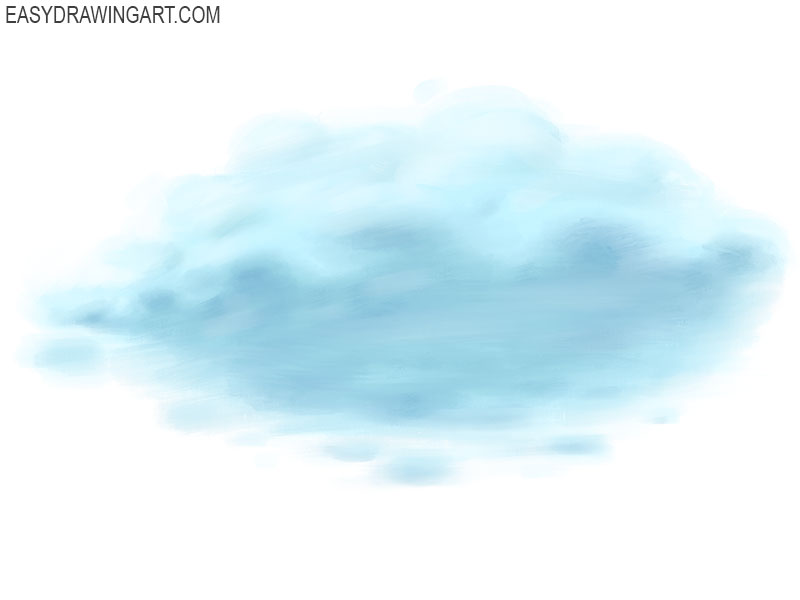
Step 7 – Add the final touches to your cloud painting
In the final step, enrich your cloud with the warm colours of the sun. Gently layer hues of yellow, pink, or orange along the areas of the cloud that the sunlight would illuminate. These colors should be blended seamlessly into the existing highlights, creating a realistic and beautiful effect of a cloud lit by the early morning or late afternoon sun.
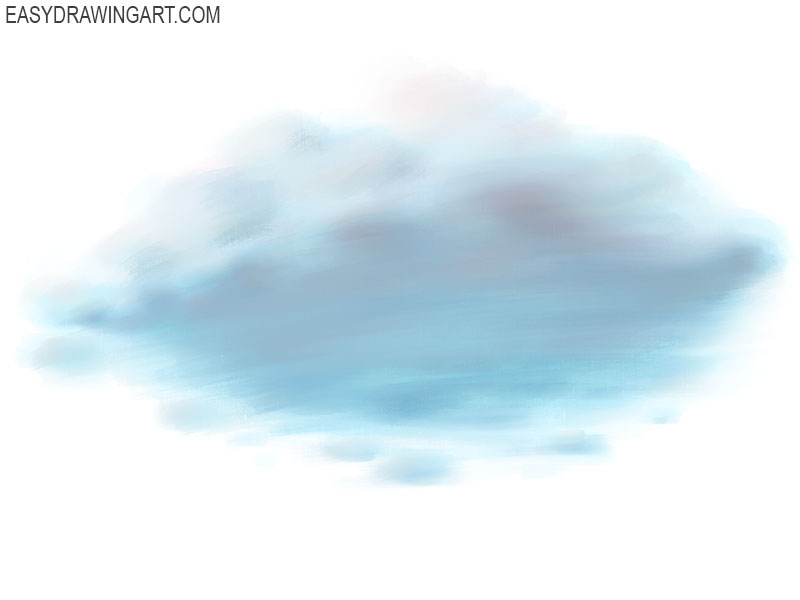
To summarize our cloud painting tutorial, success in creating realistic skyscapes lies in understanding and applying key artistic principles. We started with a simple base layer and added layers step by step to give the clouds dimension and life.
Don’t forget the importance of choosing the right materials. Working with oil requires patience due to the long drying time, but it allows for deep gradients and richness to be achieved. Acrylic dries quickly, which is good for creating clear lines and details. Gouache will offer you matteness and opacity, while water paints will offer transparency and ease of color mixing. Digital tools offer endless possibilities for experimenting with color and texture without the fear of messing up your work.
Remember that lighting plays a crucial role in the perception of cloud volume. Determine your light source and consistently apply shadows and highlights to make the clouds look realistic. Working on gradients and color transitions takes practice, so don’t be afraid to experiment with different shades and intensities.
The use of contrast is also key: dark and light areas will not only add dimension, but will also help create the effect of distance between the clouds and the viewer. And, of course, adding color accents that reflect the influence of the sun or the environment will give your clouds life and dynamics.
Don’t stop there. Art is constantly evolving, and each new creation expands the boundaries of your skill.Observe the sky, look at the landscapes of great artists, study the variety of clouds at different times of the day and under different weather conditions.

